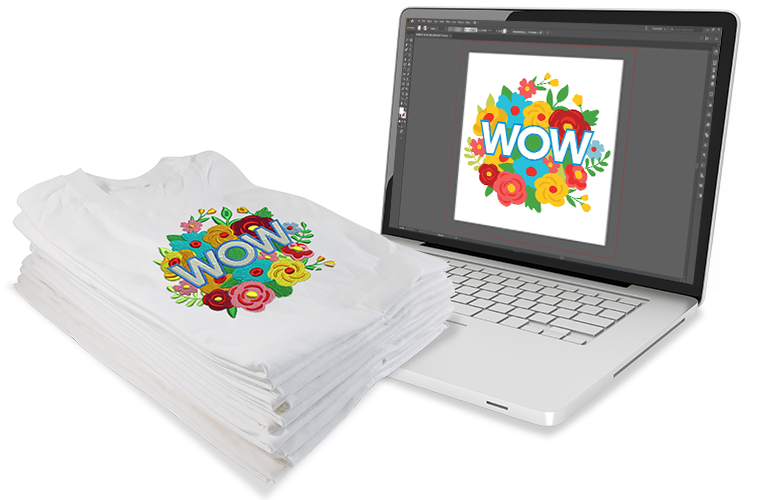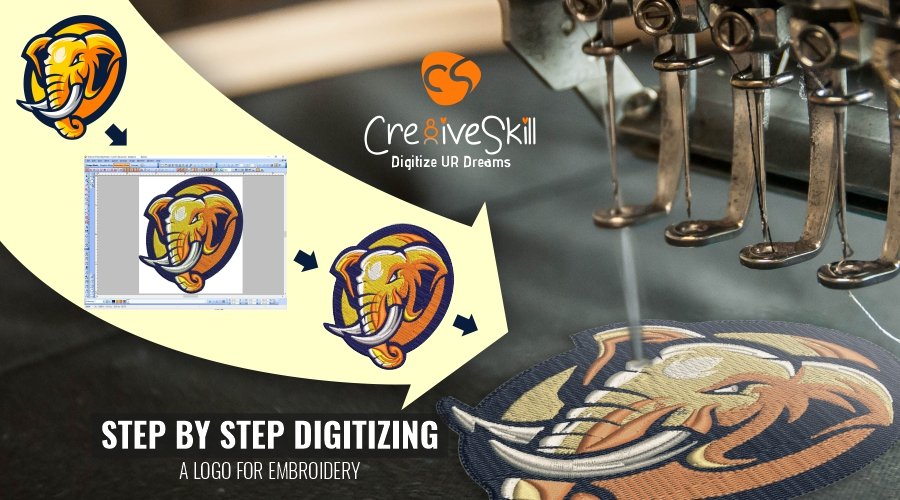Custom Digitizing for Embroidery: Customized to Your Demands
Streamlining the Art of Needlework Digitizing: Step-by-Step Guide
As innovation continues to development, the digitization process has ended up being a lot more obtainable, enabling enthusiasts to bring their detailed styles to life with simplicity. In this overview, we will untangle the complexities of needlework digitizing, damaging down each step carefully to improve the procedure and equip both beginners and skilled embroiderers alike.
Understanding Needlework Digitizing Software
Needlework digitizing software program works as a vital tool for changing elaborate layouts right into digital styles suitable with needlework equipments, facilitating exact sewing and personalization. This customized software allows customers to import numerous photo documents styles, such as JPG or PNG, and transform them right into embroidery machine-readable layouts like DST, EXP, or PES - Digitizing for Embroidery. By utilizing attributes like stitch editing, padding options, and thread shade option, digitizing software allows customers to control every element of the layout procedure
Furthermore, progressed needlework digitizing software uses devices for producing intricate designs, changing stitch thickness, and incorporating complex information. Users can likewise sneak peek the design prior to stitching it out, guaranteeing accuracy and decreasing mistakes. Additionally, lots of software application programs provide automatic functions that help improve the digitizing process, saving time and effort.
Comprehending the abilities of embroidery digitizing software application is vital for accomplishing high-quality cause needlework jobs. By grasping this tool, embroidery enthusiasts and specialists can release their creative thinking and bring detailed styles to life with precision and efficiency.

Picking the Right Design File
After acquainting on your own with the capabilities of embroidery digitizing software, the following essential action in the procedure is selecting the ideal layout file for your job. Digitizing for Embroidery. When picking a layout apply for embroidery digitizing, it's vital to think about the complexity of the style, the dimension of the last item, and the type of textile you will be functioning with
For detailed layouts with great details, a high-resolution image or vector file is recommended to make sure that the embroidery maker can properly duplicate the design. Additionally, the dimension of the end product plays a substantial function in selecting the appropriate style file. Bigger designs might need greater resolution data to maintain quality and sharpness.
Moreover, the sort of fabric you will be stitching on influences the option of design data. Different materials may require adjustments in the style file to make sure that the stitches are effectively straightened and the design looks like meant. By carefully choosing the best layout file based upon these elements, you can establish yourself up for an effective embroidery digitizing procedure.
Digitizing Devices and Techniques
Making use of specialized software application and precision strategies, digitizing devices are necessary in transforming elaborate designs right into embroidery-ready files. Needlework digitizing software, such as Wilcom, Hatch, or Embrilliance, offers the essential platform to convert art work right into stitch data. These programs supply functions like stitch editing and enhancing, underlay options, and lettering devices to guarantee the layout equates seamlessly onto textile.
One of the essential pop over here methods in digitizing is creating a clear course for the embroidery device to adhere to. This entails digitizing each element of the layout with precision, identifying stitch types, thickness, and instructions. By utilizing devices like digitizing tablet computers or software-specific plugins, embroiderers can accomplish a high level of accuracy in their digitized designs.
Furthermore, mastering the art of padding sewing is vital for creating high quality needlework. Underlay sewing maintains the material and creates a foundation for the layout, making certain that the last product is both visually enticing and durable. By recognizing these digitizing tools and techniques, embroiderers can boost their craft and bring detailed styles to life with precision and performance.
Personalizing Stitch Kinds and Instructions
Having actually established a foundation in digitizing devices and techniques, a vital aspect beforehand embroidery workmanship depends on tailoring stitch kinds and directions with accuracy and purpose. The option of stitch types can significantly influence the overall appearance and texture of the stitched design. Satin stitches, understood for their smooth and glossy coating, work well for developing borders go to the website and message. On the other hand, fill stitches are optimal for covering bigger areas successfully. By tactically incorporating these stitch types, embroiderers can attain depth and dimension in their styles.
In addition, the direction of stitches plays a crucial function in boosting the visual charm of the last needlework. Varying stitch directions can include texture, emphasize certain aspects, and produce aesthetic interest. For example, transforming the angle of stitches can simulate movement or natural patterns like hair or plumes. By explore different stitch angles and patterns, embroiderers can bring their styles to life with impressive detail and intricacy. Grasping the art of personalizing stitch kinds and directions equips embroiderers to release their creative thinking and boost the top quality of their job.
Testing and Refining Your Digitized Style
To guarantee the accuracy and high quality of your digitized style, complete screening and improvement are necessary action in the needlework digitizing procedure. When you have actually finished the digitization of your style, it is critical to examine it prior to continuing with the actual embroidery. Checking enables you to determine any prospective problems such as string breaks, sew thickness problems, or design distortions that may impact the last result.

After testing, it is necessary to refine your digitized layout based upon the comments from the examination sew-out. This may involve tweaking stitch setups, changing thickness, or making changes to the overall style to attain the preferred go to the website result. By iterating via screening and refinement, you can adjust your digitized style to perfection prior to progressing with the real embroidery process.
Verdict
In final thought, mastering the art of needlework digitizing needs a detailed understanding of the software program, choosing the ideal design file, utilizing digitizing devices and strategies, tailoring stitch types and directions, and testing and refining the digitized layout. By adhering to these steps, embroiderers can simplify the digitizing procedure and create top quality embroidered layouts with accuracy and effectiveness.